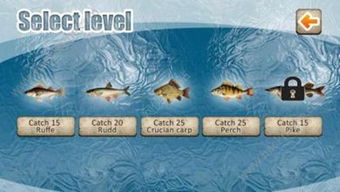Winter fishing, though often overlooked, can be a rewarding and serene experience. The crisp air, the quiet surroundings, and the challenge of catching fish in cooler temperatures make it a unique pursuit. One of the key elements to a successful winter fishing trip is selecting the right fishing bait and understanding how to use a fish finder. This article will delve into the techniques and tips for choosing the right fishing bait, focusing on how to select the perfect fish finder and understanding the nuances of winter fishing.

Understanding Winter Fishing Conditions
Before diving into the specifics of choosing the right fishing bait, it's important to understand the conditions that winter fishing presents. In colder temperatures, fish tend to be more inactive and less likely to feed. They often move to deeper waters where the water temperature is more stable. Therefore, it's crucial to adapt your tactics accordingly.
Selecting the Right Fishing Bait
Live Bait
Live bait is often preferred in winter due to its natural movement and scent, which can attract fish even when they are less active. Here are some common types of live bait suitable for winter fishing:
- Minnows: These small fish are highly effective as they can mimic the natural prey of many fish species.
- Crickets: Crickets are a good choice for panfish and can be kept alive in a bait bucket with water and air holes.
- Leaches: Leaches are another great option for larger fish, especially in deeper waters.
Artificial Lures
Artificial lures can be just as effective as live bait in winter. The key is to choose lures that are slow-moving and quiet to avoid startling fish. Here are some types of artificial lures to consider:
- Jigs: Small, lightweight jigs can be effective for a variety of fish species. The slower you retrieve them, the better.
- Spinnerbaits: These lures create a lot of movement and vibration, which can be appealing to fish during the colder months.
- Soft Plastics: Slow-sinking soft plastics, like worms or grubs, can be deadly when presented correctly.
Factors to Consider When Choosing Bait
- Water Temperature: In colder water, fish are less likely to chase down bait. Therefore, it's important to use baits that require less activity from the fish.
- Water Clarity: In murky waters, brighter colors may be more effective. In clear waters, natural or subtle colors can work better.
- Size of the Fish: Larger fish may require larger baits, while smaller fish can be caught on smaller offerings.
Choosing the Right Fish Finder
A fish finder is an invaluable tool for winter fishing, as it can help you locate fish in the cooler water. Here are some tips for selecting the right fish finder:
- Sonar Technology: Choose a fish finder with high-quality sonar technology, such as CHIRP or SideScan, which can provide clearer images of underwater structures and fish.
- Screen Size: A larger screen can make it easier to see details in low-light conditions.
- Features: Look for features like GPS, which can help you mark spots where you caught fish, and a built-in temperature sensor, which can provide valuable data on water conditions.
Winter Fishing Techniques
- Early Morning or Late Evening: Fish are often more active during these times, so plan your fishing trips accordingly.
- Patience: Winter fishing requires patience. Fish may take longer to bite, so be prepared to wait.
- Adjusting to Conditions: Be flexible and adjust your tactics based on the weather and water conditions.
Conclusion
Winter fishing can be a challenging but incredibly rewarding experience. By selecting the right fishing bait, choosing the perfect fish finder, and understanding the unique conditions of winter fishing, you can increase your chances of success. Remember to adapt to the slower pace of winter fishing and enjoy the tranquility of the cold season on the water. Happy fishing!












